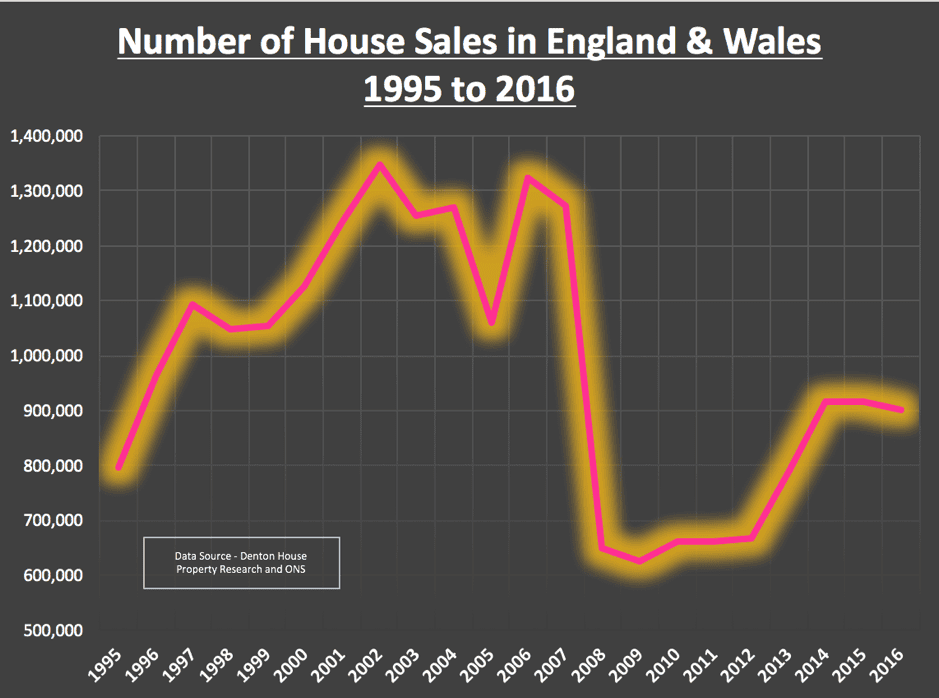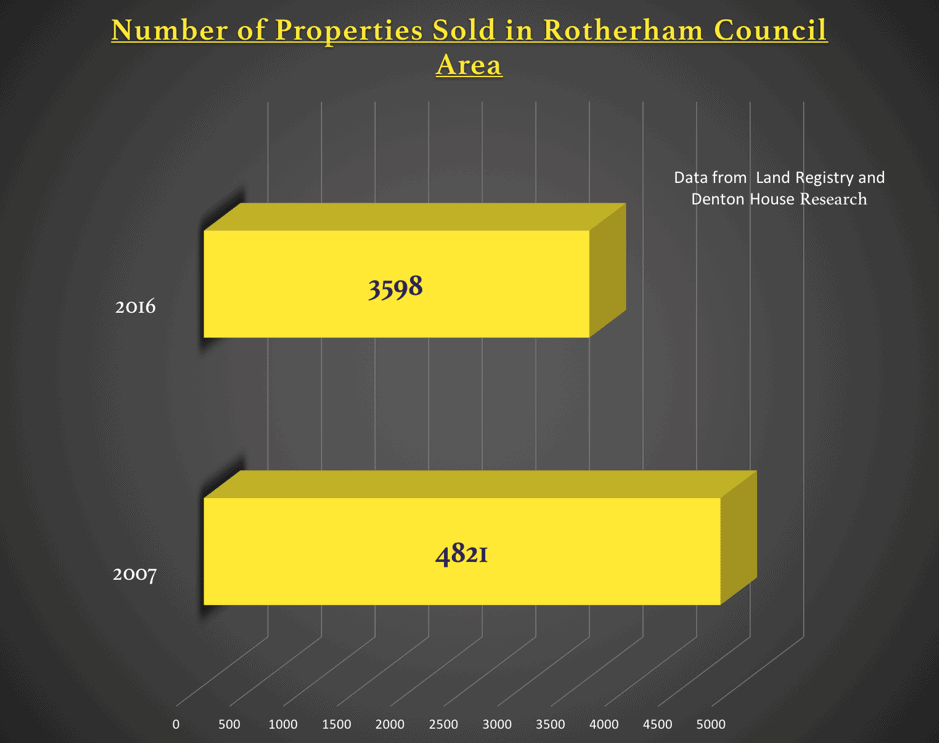Did you know? In Rotherham, there is a 25.3% drop in people that are moving home in the last 10 Years.
Back in the early 2000s between 1m and 1.3m people moved each year in England and Wales, peaking at 1,349,306 home-moves (i.e. house sales) in 2002. However, after the ‘credit crunch’ hit in 2007 the number of house sales fell to 624,994 in 2009.
Since then it has steadily recovered, albeit to a more ‘respectable’ 899,708 properties by 2016. This means there are around 450,000 fewer house sales (house-moves) each year compared to the previous decade.
So, why are there fewer house sales?
To answer this question, we need to go back 40/50 years.
Inflation was high in the late 1960s, 70s and early 80s. To combat this the Government raised set interest rates to a high level in a bid high to try to lower inflation. Higher interest rates meant the householders monthly mortgage payments were higher, meaning mortgages took a large proportion of the homeowner’s household budget. Despite this, it wasn’t all bad news as the high inflation eroded the mortgage debt in ‘real spending power terms’. As wages grew (to keep up with inflation), home owners could get bigger and even higher mortgages. This therefore allowed people to move up the property ladder more quickly.
Things changed in the late 1990s and early 2000s.
UK interest rates tumbled as UK inflation dropped. Lower interest rates and low inflation, especially in the five years 2000 to 2005, meant we saw double digit growth in the value of UK property. This inevitably meant all the home owner’s equity grew significantly, meaning people could continue to move up the property ladder (even without the effects of inflation).
This snowball effect of significant numbers moving house, continued into the 2000s (2004 to 2007), as banks loosened their lending criteria where home movers could borrow even more to move up the property ladder.
How have things changed in 2017?
You would think that with ultra-low interest rates at 0.25% that the number of people moving would be very high. However, this has not been the case. Less people are moving due to:
- low wage growth of 1.1% per annum,
- the tougher mortgage rules since 2014
- sporadic property price growth in the last few years
- high property values comparative to salaries
What does this mean for Rotherham?
In 2007, 4,821 properties sold in the area but by last year (2016) only 3,598 properties sold. This is a drop of 25.37%.
Therefore, we have just over 1,220 less households moving in the Rotherham and the surrounding council area each year.
Now of that number, it is recognised throughout the property industry around 80% of them are homeowners with a mortgage. That means there are around 1,003 mortgaged households a year (80% of the figure of 1,220) in the Rotherham and surrounding council area that would have moved 10 years ago, but won’t this year.
The reason they can’t/won’t move can be split down into different categories, explained in a recent report by the Council of Mortgage Lenders (CML). So, based on this report, of those estimated 1,003 annual Rotherham non-movers:
- There are around 361 households a year that aren’t moving due to a fall in the number of mortgaged owner occupiers (i.e. demographics).
- There are around 140 households a year are of the older generation mortgaged owner occupiers. As they are increasingly getting older, older people don’t tend to move, regardless of what is happening to the property market (i.e. lifestyle).
- An estimated 60 households of our annual non-movers will mirror the rising number of high equity owner occupiers, who previously would have moved with a mortgage but now move as cash buyers (i.e. high house price growth).
- Finally, we believe there are 441 Rotherham mortgaged homeowners that are unable to move because of the financing of the new mortgage or keeping within the new rules of mortgage affordability that came into play in 2014 (i.e. mortgage). This is the majority group.
So, what can we do about it?
Without doubt, the first three points above (lifestyle, demographics and high price growth) is something beyond the Government or Bank of England control.
Having said this, there could be some influence exerted to help the people that are unable to move because of the financing of the new mortgage or having to keep within the new rules of mortgage affordability.
If the Rotherham property values were lower, this would decrease the size of each step up the property ladder. This would mean the opportunity cost of increasing their mortgage would reduce and they would be able to move to more upmarket properties.
To keep up to date with all our latest news, why not follow us on Twitter or like our Facebook page.
If you are an investor or landlord that is interested in our services, please don’t hesitate to contact the office on 01709 365 584.



